Ancient documents and books from Joseon times (1392-1910) were traditionally marked with stamps or seals. The royal stamp, called the eobo (御寶) represented the king’s official approval.
The king’s stamp is one of Joseon's royal traditions, a tradition that represents the king’s power and the throne's authority.
Eobo stamps were used to verify in a formal, documented manner the succession to the throne and the crowning of a royal family member, such as a prince or princess. The seals were stamped on diplomatic or administrative paper, too. They were also called guksae (國璽), the seal of the state, or oksae (玉璽).
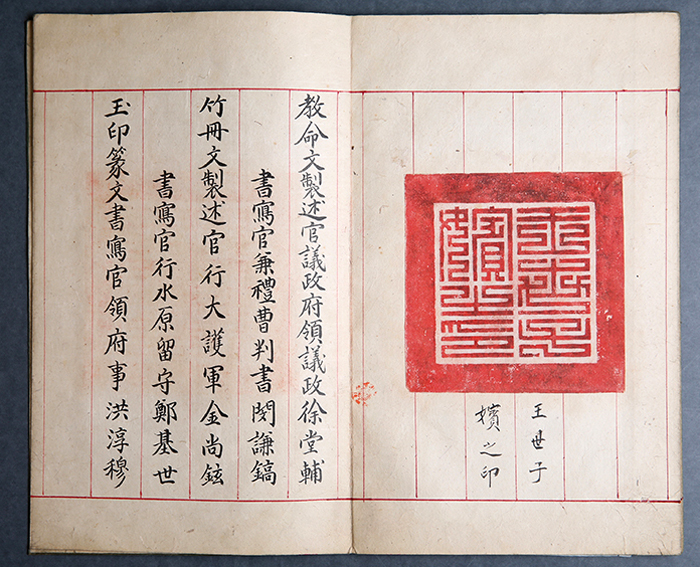
A special exhibition that sheds light on a total of 58 ancient Joseon-era records with an eobo stamp got underway at the National Library of Korea on January 2.
The “Eobo as Seen on Ancient Documents and Books" exhibition features a series of documents featuring royal stamps, including those with eobos inscribed with, "王妃之寶," "王世子印" and "王世子妃之印," the seals used on documents to have the queen, the crown prince and the crown princess, respectively, fully invested.
Among other documents on exhibit, there are the king’s documents with eobo stamps specifically designed for administrative purposes.
A series of books that the king gave to his retainers also feature special eobo stamps. The exhibit makes public the Daehan Guksae, a state seal produced when King Gojong (r. 1863-1907), the 26th king of Joseon's Yi Dynasty and the first Korean emperor, proclaimed the Daehan Empire (1897-1910).
A royal proclamation (高宗皇帝尊 玉冊文) made by order of King Sunjong (r. 1907-1910), the final emperor of Korea, in honor of his late father, Gojong, has a stamp inscribed with, “Sukang" (壽康), the posthumous title Gojong was awarded as the first emperor.
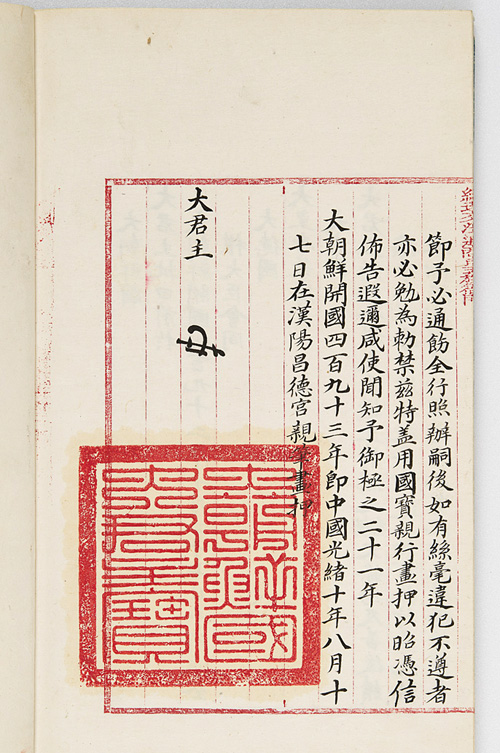
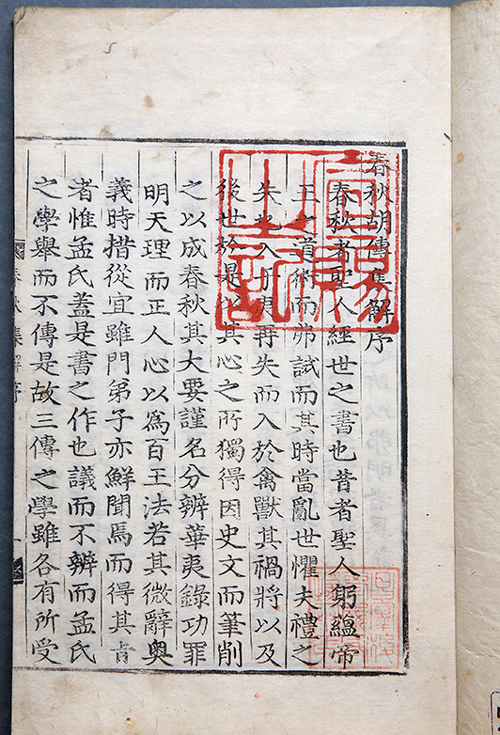
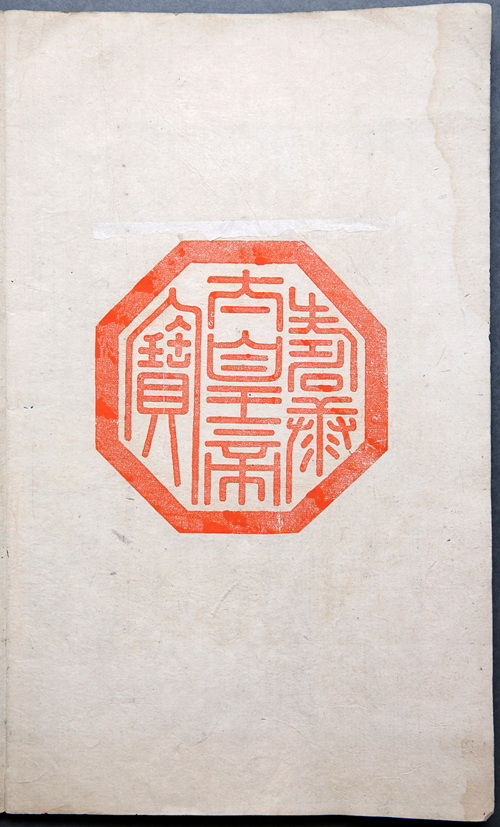
“This exhibition is part of efforts to bring to light an aspect of royal traditions during Joseon times with the help of eobo seals,” said an official from the National Library of Korea.
“By following traces of these stamps remaining on old documents, you can get a glimpse at how administrative and diplomatic procedures were conducted during the law-abiding period, as well as at how the authority of the king and the royal court was maintained and managed.”
The exhibition continues until March 30 in the Old & Rare Books Room on the sixth floor of the National Library of Korea, in Banpo, southern Seoul.
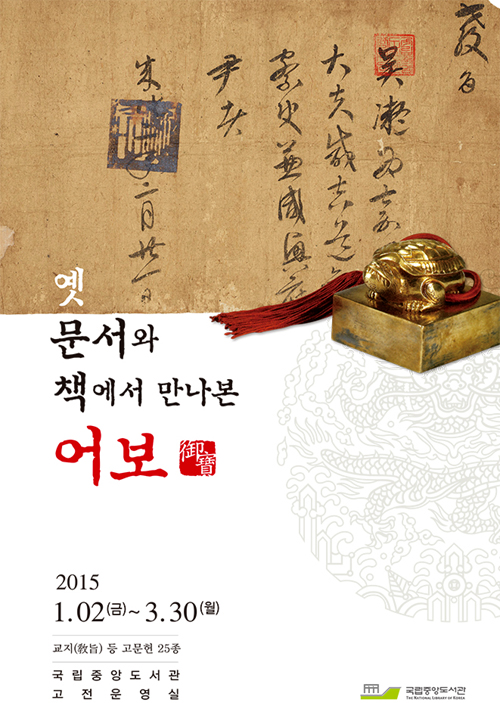
By Sohn JiAe
Korea.net Staff Writer
Photos: The National Library of Korea
jiae5853@korea.kr
The king’s stamp is one of Joseon's royal traditions, a tradition that represents the king’s power and the throne's authority.
Eobo stamps were used to verify in a formal, documented manner the succession to the throne and the crowning of a royal family member, such as a prince or princess. The seals were stamped on diplomatic or administrative paper, too. They were also called guksae (國璽), the seal of the state, or oksae (玉璽).

A book produced in 1882 when Sunmyeong was proclaimed royal princess after she married the king's son, Sunjong, is stamped with, “王世子嬪之印.”
A special exhibition that sheds light on a total of 58 ancient Joseon-era records with an eobo stamp got underway at the National Library of Korea on January 2.
The “Eobo as Seen on Ancient Documents and Books" exhibition features a series of documents featuring royal stamps, including those with eobos inscribed with, "王妃之寶," "王世子印" and "王世子妃之印," the seals used on documents to have the queen, the crown prince and the crown princess, respectively, fully invested.
Among other documents on exhibit, there are the king’s documents with eobo stamps specifically designed for administrative purposes.
A series of books that the king gave to his retainers also feature special eobo stamps. The exhibit makes public the Daehan Guksae, a state seal produced when King Gojong (r. 1863-1907), the 26th king of Joseon's Yi Dynasty and the first Korean emperor, proclaimed the Daehan Empire (1897-1910).
A royal proclamation (高宗皇帝尊 玉冊文) made by order of King Sunjong (r. 1907-1910), the final emperor of Korea, in honor of his late father, Gojong, has a stamp inscribed with, “Sukang" (壽康), the posthumous title Gojong was awarded as the first emperor.

Documents from the Korea-Germany Treaty of Friendship and Commerce (大朝鮮國大德國通商條約), a treaty struck in 1883 between the two countries, are stamped with, “大朝鮮國大君主寶.”

A book that the king granted to one of his retainers is marked with an eobo stamp.

Gojong, is stamped with, “Sukang" (壽康), Gojong's posthumous title.
“This exhibition is part of efforts to bring to light an aspect of royal traditions during Joseon times with the help of eobo seals,” said an official from the National Library of Korea.
“By following traces of these stamps remaining on old documents, you can get a glimpse at how administrative and diplomatic procedures were conducted during the law-abiding period, as well as at how the authority of the king and the royal court was maintained and managed.”
The exhibition continues until March 30 in the Old & Rare Books Room on the sixth floor of the National Library of Korea, in Banpo, southern Seoul.

The official poster for the “Eobo as Seen on Ancient Documents and Books” exhibition that continues until March 30 at the National Library of Korea.
By Sohn JiAe
Korea.net Staff Writer
Photos: The National Library of Korea
jiae5853@korea.kr